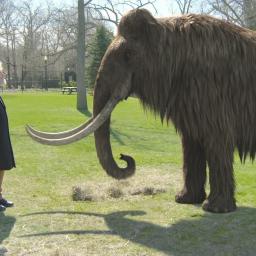Scientists Determined to Clone Woolly Mammoths
 Get ready for Pleistocene Park
Get ready for Pleistocene Park South Korea's Sooam Biotech Research Foundation (which has been cloning dogs for years) is partnering with Russian researchers to clone a woolly mammoth, if only they can find suitable cells.
Russian and South Korean scientists who recovered a well-preserved frozen woolly mammoth from Siberia's permafrost last year raised hopes that researchers could find an intact cell nucleus that contained the full set of DNA instructions for making a mammoth. If that could be done, the nucleus could be inserted into an elephant egg, sparked into cell division, and then implanted into a surrogate mother elephant. The result? A clone that should be virtually identical to the long-dead mammoth.
Carbon dating of the mammoth's flesh determined that she lived about 40,000 years ago. (Earlier estimates suggested the remains were just 10,000 years old.) Growth rings in the tusk suggested she was in her late 50s when she died.
Population bottlenecks happen and happened naturally:
http://en.wikipedia.org/wiki/Population_bottleneck
Species still survived. Some without human intervention.